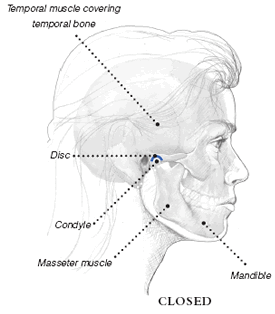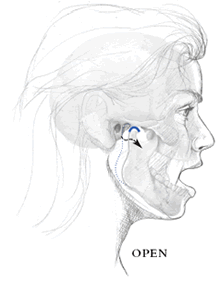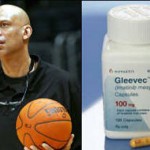Young singer gets botox for her new role on “Glee”

Eighteen year old Filipino singer Charice Pempengco, who was first introduced to this country by Oprah Winfrey, is preparing for a role on the hit TV series Glee. Besides acting lessons, it has been reported that she recently underwent non-invasive cosmetic procedures at the Belo Medical Clinic including thermage and Botox. Dr. Belo explained that thermage and Botox were meant to make Pempengco’s “naturally round face” appear thinner, however, Charice’s rep said that the treatments were not for cosmetic reasons, but that “She’s had Botox for some jaw pain she’s experiencing.”
Temporomandibular joint and muscle disorders, TMJ, are a group of conditions that cause pain and dysfunction in the jaw joint and muscles that control jaw movement. Some estimates suggest that TMJ disorders affect over 10 million Americans; the conditions appear to be more common in women than men.
What is the temporomandibular joint?
The temporomandibular joint connects the lower jaw, called the mandible, to the bone at the side of the head- the temporal bone. If you place your fingers just in front of your ears and open your mouth, you can feel the joints. Because these joints are flexible, the jaw can move smoothly up and down and side to side, enabling us to talk, chew and yawn. The muscles which attach to and surround the joint control its position and movement. The combination of hinge and sliding motions makes this joint among the most complicated in the body.
When we open our mouths, the rounded ends of the lower jaw, called condyles, glide along the joint socket of the temporal bone. The condyles slide back to their original position when we close our mouths. To keep this motion smooth, a soft disc lies between the condyle and the temporal bone. This disc absorbs shocks to the jaw joint from chewing and other movements.
What causes TMJ disorders?
Trauma to the jaw or TMJ plays a role in some TMJ disorders. But for most jaw joint and muscle problems, the cause is unknown. For many people, symptoms seem to start without obvious reason. Research disputes the popular belief that a bad bite or orthodontic braces can trigger TMJ disorders. Likewise, clicking sounds in the jaw joint do not lead to serious problems. In fact, jaw noises alone, without pain or limited jaw movement, do not indicate a TMJ disorder and do not warrant treatment.
Also unclear is the role that stress and/or tooth grinding play as major causes of TMJ disorders. Many people with these disorders do not grind their teeth, and many long-time tooth grinders do not have painful joint symptoms.
What are the signs and symptoms?
A variety of symptoms may be linked to TMJ disorders. Pain, particularly in the chewing muscles and/or jaw joint, is the most common symptom. Other likely symptoms include:
- radiating pain in the face, jaw, or neck,
- jaw muscle stiffness,
- limited movement or locking of the jaw,
- painful clicking, popping or grating in the jaw joint when opening or closing the mouth,
- a change in the way the upper and lower teeth fit together.
How are TMJ disorders treated?
Conservative Treatments
Because the most common jaw joint and muscle problems are temporary and do not get worse, simple treatment is all that is usually needed to relieve discomfort.
Self-Care Practices
There are steps you can take that may be helpful in easing symptoms, such as:
- eating soft foods,
- applying ice packs,
- avoiding extreme jaw movements (such as wide yawning, loud singing, and gum chewing),
- learning techniques for relaxing and reducing stress,
- practicing gentle jaw stretching and relaxing exercises that may help increase jaw movement. Your health care provider or a physical therapist can recommend exercises if appropriate for your particular condition.
Pain Medications
For many people with TMJ disorders, short-term use of over-the-counter pain medicines or nonsteroidal anti-inflammatory drugs (NSAIDS), such as ibuprofen, may provide temporary relief from jaw discomfort. When necessary, your dentist or doctor can prescribe stronger pain or anti-inflammatory medications, muscle relaxants, or anti-depressants to help ease symptoms.
Stabilization Splints
Your doctor or dentist may recommend an oral appliance, also called a stabilization splint or bite guard, which is a plastic guard that fits over the upper or lower teeth. Stabilization splints are the most widely used treatments for TMJ disorders. Studies of their effectiveness in providing pain relief, however, have been inconclusive. If a stabilization splint is recommended, it should be used only for a short time and should not cause permanent changes in the bite. If a splint causes or increases pain, stop using it and see your health care provider.
Botox
Botox (botulinum toxin type A) is a drug made from the same bacterium that causes food poisoning. Used in small doses, Botox injections can actually help alleviate some health problems. The Food and Drug Administration (FDA) has approved Botox for the treatment of certain eye muscle disorders, cervical dystonia (neck muscle spasms), and severe underarm sweating, as well as for limited cosmetic use. Botox has not been approved by the FDA for use in TMJ disorders (but this doesn’t mean that licensed physicians cannot prescribe it — see here). Research is under way to learn how Botox specifically affects jaw muscles and their nerves. The findings will help determine if this drug may be useful in treating TMJ disorders.
Irreversible Treatments
Irreversible treatments that have not been proven to be effective and may make the problem worse include orthodontics to change the bite; crown and bridge work to balance the bite; grinding down teeth to bring the bite into balance, called “occlusal adjustment”; and repositioning splints, also called orthotics, which permanently alter the bite.
Source: National Institute of Dental and Craniofacial Research (NIDCR)




























0 comments